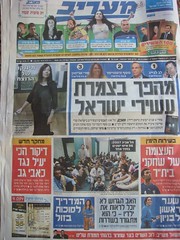An obituary is a piece written in a newspaper about someone (famous) who recently died. The obituary section was a classic in quality newspapers at least in the English -speaking world. It used to be a great place for aspiring print journalists to hone their writing skills. A few years ago the one newspaper (it's a weekly) that I revere, enjoy and read regularly, The Economist, added an obituary section and its choice of the weekly winner is occasionally eclectic. None more so than this week's, which mourns the passing of a famous parrot.
Alex the African Grey
Sep 20th 2007
From The Economist print edition
Science's best known parrot died on September 6th, aged 31
Brandeis University
THE last time Irene Pepperberg saw Alex she said goodnight as usual. "You be good," said Alex. "I love you." "I love you, too." "You'll be in tomorrow?" "Yes, I'll be in tomorrow." But Alex (his name supposedly an acronym of Avian Learning Experiment) died in his cage that night, bringing to an end a life spent learning complex tasks that, it had been originally thought, only primates could master.
In science as in most fields of endeavour, it is important to have the right tool for the job. Early studies of linguistic ability in apes concluded it was virtually non-existent. But researchers had made the elementary error of trying to teach their anthropoid subjects to speak. Chimpanzee vocal cords are simply not up to this—and it was not until someone had the idea of teaching chimps sign language that any progress was made.
Even then, the researchers remained human-centric. Their assumption was that chimps might be able to understand and use human sign language because they are humanity's nearest living relatives. It took a brilliant insight to turn this human-centricity on its head and look at the capabilities of a species only distantly related to humanity, but which can, nevertheless, speak the words people speak: a parrot.
The insight in question came to Dr Pepperberg, then a 28-year-old theoretical chemist, in 1977. To follow it up, she bought a one-year-old African Grey parrot at random from a pet shop. Thus began one of the best-known double acts in the field of animal-behaviour science.
Dr Pepperberg and Alex last shared a common ancestor more than 300m years ago. But Alex, unlike any chimpanzee (with whom Dr Pepperberg's most recent common ancestor lived a mere 4m years ago), learned to speak words easily. The question was, was Alex merely parroting Dr Pepperberg? Or would that pejorative term have to be redefined? Do parrots actually understand what they are saying?
Bird brained
Dr Pepperberg's reason for suspecting that they might—and thus her second reason for picking a parrot—was that in the mid-1970s evolutionary explanations for behaviour were coming back into vogue. A British researcher called Nicholas Humphrey had proposed that intelligence evolves in response to the social environment rather than the natural one. The more complex the society an animal lives in, the more wits it needs to prosper.
The reason why primates are intelligent, according to Dr Humphrey, is that they generally live in groups. And, just as group living promotes intelligence, so intelligence allows larger groups to function, providing a spur for the evolution of yet more intelligence. If Dr Humphrey is right, only social animals can be intelligent—and so far he has been borne out.
Flocks of, say, starlings or herds of wildebeest do not count as real societies. They are just protective agglomerations in which individuals do not have complex social relations with each other. But parrots such as Alex live in societies in the wild, in the way that monkeys and apes do, and thus Dr Pepperberg reasoned, Alex might have evolved advanced cognitive abilities. Also like primates, parrots live long enough to make the time-consuming process of learning worthwhile. Combined with his ability to speak (or at least "vocalise") words, Alex looked a promising experimental subject.
And so it proved. Using a training technique now employed on children with learning difficulties, in which two adults handle and discuss an object, sometimes making deliberate mistakes, Dr Pepperberg and her collaborators at the University of Arizona began teaching Alex how to describe things, how to make his desires known and even how to ask questions.
By the end, said Dr Pepperberg, Alex had the intelligence of a five-year-old child and had not reached his full potential. He had a vocabulary of 150 words. He knew the names of 50 objects and could, in addition, describe their colours, shapes and the materials they were made from. He could answer questions about objects' properties, even when he had not seen that particular combination of properties before. He could ask for things—and would reject a proffered item and ask again if it was not what he wanted. He understood, and could discuss, the concepts of "bigger", "smaller", "same" and "different". And he could count up to six, including the number zero (and was grappling with the concept of "seven" when he died). He even knew when and how to apologise if he annoyed Dr Pepperberg or her collaborators.
And the fact that there were a lot of collaborators, even strangers, involved in the project was crucial. Researchers in this area live in perpetual fear of the "Clever Hans" effect. This is named after a horse that seemed to count, but was actually reacting to unconscious cues from his trainer. Alex would talk to and perform for anyone, not just Dr Pepperberg.
There are still a few researchers who think Alex's skills were the result of rote learning rather than abstract thought. Alex, though, convinced most in the field that birds as well as mammals can evolve complex and sophisticated cognition, and communicate the results to others. A shame, then, that he is now, in the words of Monty Python, an ex-parrot.



